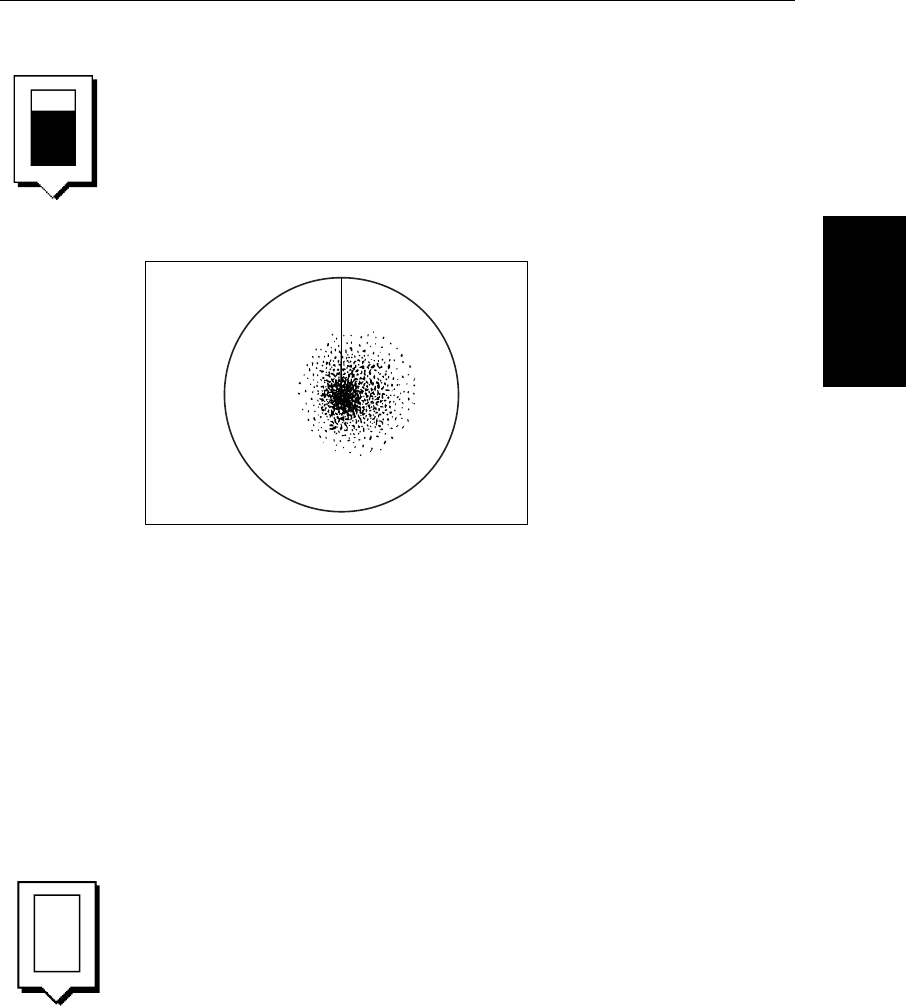
Chapter 3: Standard Radar Operations 3-9
Adjusting Gain, Sea
Clutter, Rain Clutter
and Tune
Sea Clutter Control
Radarreturnsfromwavesaroundyourvesselcanclutterthecentreoftheradar
picture (see Figure 3-7, making it difficult to detect real targets. Such sea
clutterusually appears as multiple echoeson the display at short range scales,
andthe echoesarenot repetitiveor consistentinposition.Withhighwindsand
extreme conditions, echoes from sea clutter may cause dense background
clutter in the shape of an almost solid disc.
Figure 3-7: Sea Clutter
The SEA control reduces the gain level inthe areasnear yourvessel, extending
upto 3to5nmdependingon thewaveand seaconditions.Thishas theeffectof
reducing the sea returns to intermittent small dots, while small targets are still
visible. Gain levels further from your vessel remain unchanged.
Youcan usethe Gainand Seacontroltohelp minimizethe effects of sidelobes
(see Identifying False Echo Returns on page 3-5).
Note: On short range scales, do not set the Sea control so high that all clutter
is removed, since this could stop you seeing echoes from close targets.
Tuning the Receiver
The TUNE control is usedto fine tune the receiver in thescanner for maximum
targetreturnson thedisplay. InAuto mode,the radartunes itselfautomatically
onall range scales.Werecommendthat you leave the TUNE controlin Auto
mode.
If you do set the TUNE control to Manual, you will need to adjust it about 10
minutes after you have turned on the radar, since the required setting changes
once the magnetron has warmed up.
You should adjust the control to obtain the maximum signal strength, as
indicated in the 8-step bar above the slider. If you cannot tune the radar
successfully, refer to Section 7.6 for information on the Tune Preset function.
SEA
MANUAL
75%
D3968-1
TUNE
A
U
T
O
81186_3.book Page 9 Thursday, August 22, 2002 8:23 AM


















